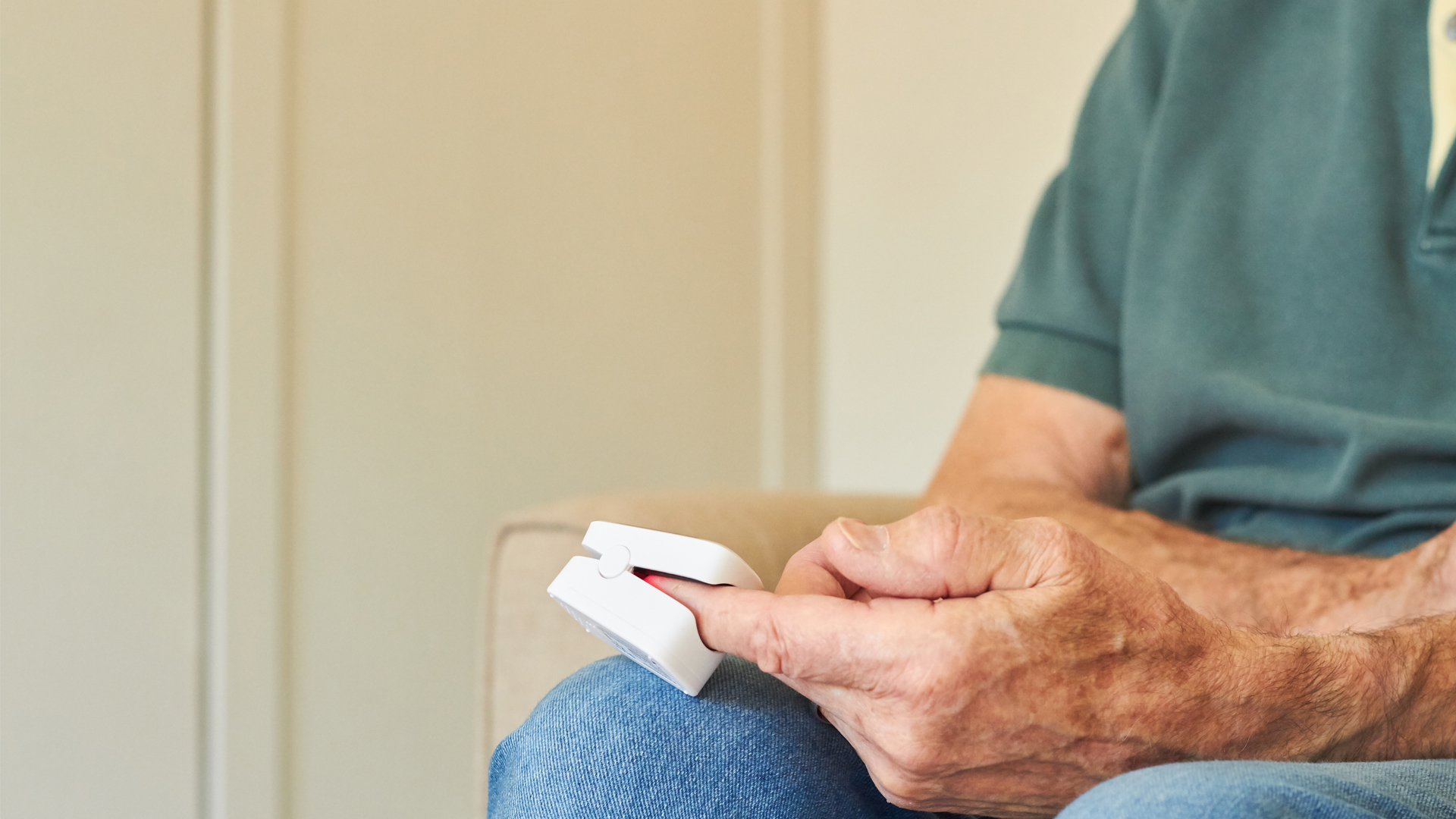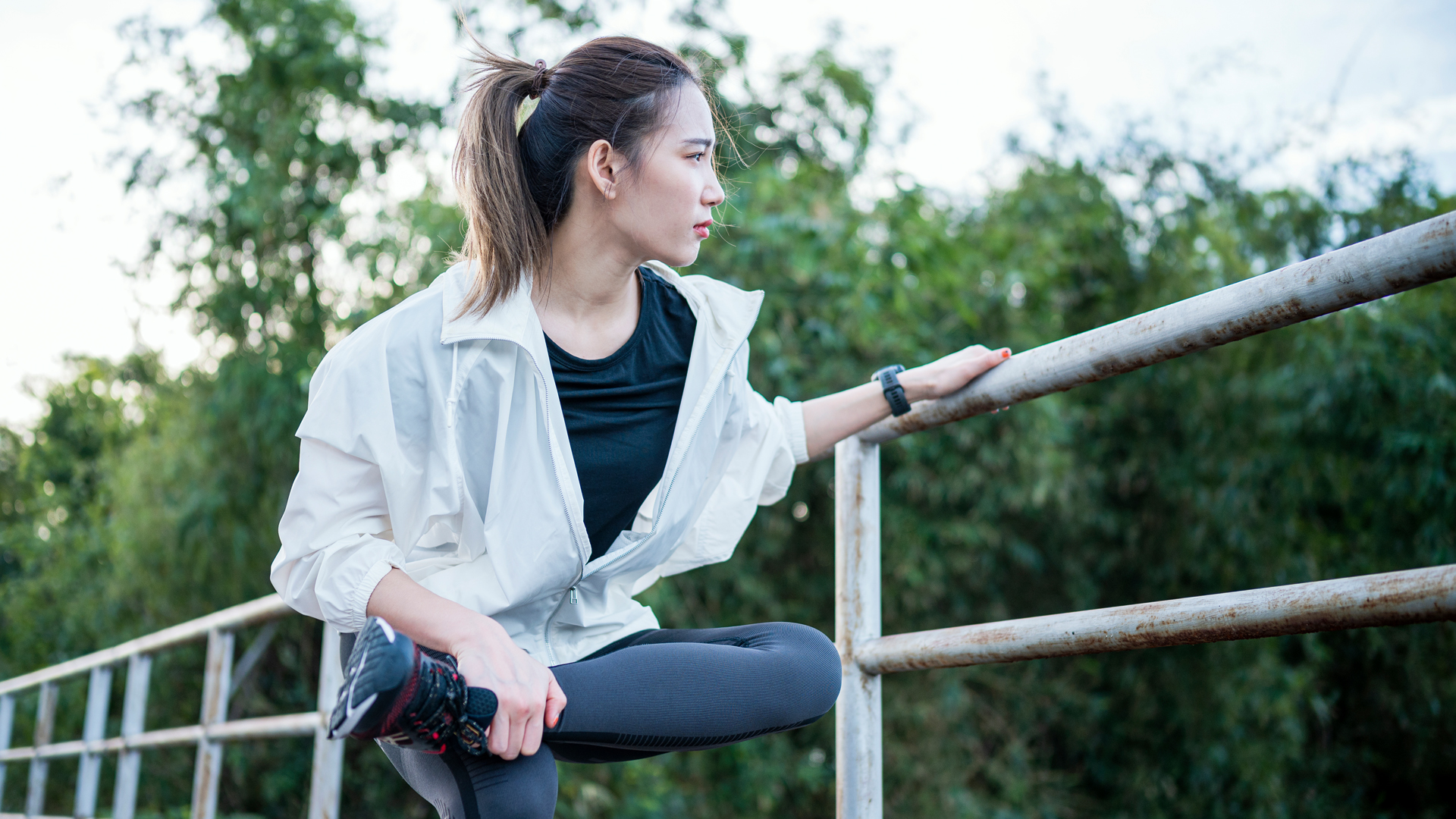How to measure blood oxygen, and what it means
Your blood oxygen level can reveal a lot about your health

Curious about the blood oxygen tracker on your new wearable? This little feature allows you to monitor how much oxygen is in your red blood cells. When you’re exercising – or if you’re at high altitudes – you might see your blood oxygen levels drop slightly. But as long as your reading remains at 95% or above when you’re resting, you’re well within the normal range.
As a warning, even the best fitness trackers can’t guarantee complete accuracy here. Small movements can change a reading, along with things like the tightness of your watch strap. But you can use the readings to monitor general trends in your blood oxygen levels, observing if they increase or decrease during certain activities.
We asked exercise physiologist Bryan Byrne, one of the coaches at Oxfit, to break down exactly what blood oxygen levels can tell you about your health.
What is blood oxygen?
Blood oxygen saturation is the amount of oxygen in your red blood cells, which carry it around your body.
“Oxygen is used for energy production – it’s the body’s fuel and is crucial for every function it performs to keep everything working properly,” says Byrne. “Having sufficient blood oxygen levels, or saturation, is important as it shows how well the body is functioning.
“A normal level of blood oxygen is between 95% and 100%. Levels can be measured through a variety of devices, from smart watches to dedicated SPO2 trackers, and these show how efficiently blood is carrying oxygen around the body.”

What causes low blood oxygen?
“There are various reasons why blood oxygen levels might be low – from lung conditions like asthma or respiratory illnesses like Covid-19, infections like pneumonia, activity levels and even altitude can affect the body’s ability to get oxygen where it needs it most,” says Byrne.
Sign up for breaking news, reviews, opinion, top tech deals, and more.
“Typically when a low blood oxygen level is measured during rest it’s a sign of respiratory issues, which could mean a chronic disorder or an acute infection. This is commonly seen with people who have been diagnosed with chronic obstructive pulmonary disorders (COPD) or those with infections affecting the lungs.”
And being at a higher altitude can make blood oxygen levels drop, says Byrne. “This is down to a change in barometric pressure and less oxygen in each breath. Respiratory rate will increase and blood oxygen levels will fall. As a result symptoms can include headaches, dizziness, confusion and shortness of breath.

“Low levels of oxygen can actually have a positive impact on sports performance and for that reason athletes have been using altitude training for years to prepare for a competition or sporting event. A drop in blood oxygen levels forces the body to produce extra red blood cells, which allows higher amounts of oxygen to reach and fuel an athlete’s muscles. This triggers a physiological change in the body that can improve stamina and performance.”
But Byrne warns this altitude training is not without its risks. “An increase in red blood cells also means an increase in blood thickness, so the heart rate will increase and you may end up with the opposite effect – less oxygen available in the muscles due to slower blood flow.”
What happens to blood oxygen during exercise?
When we exercise, the body has to work harder to keep blood oxygen levels up.
Byrne explains: “During exercise, blood oxygen levels generally decrease due to a decreased binding of oxygen to haemoglobin (red blood cells),” says Byrne. “Your body also has an increased demand for oxygen to fuel the energy production in the muscles, so to balance the supply and demand respiratory rate the breathing frequency increases to ensure that more oxygen is being absorbed.”
“Oxygen is one of the primary sources of energy production in the body, especially during endurance exercise. If the intensity and duration is sufficient then the body’s demand will surpass the supply and other energy systems will kick in, which are not sustainable for long durations.”

How can you measure your blood oxygen levels?
“Blood oxygen can be measured using pulse oximetry – this uses infrared and red light, and an optical sensor,” explains Byrne.
“Highly oxygenated blood will absorb more infrared light and let more red light pass through. The opposite is true for blood with low oxygen levels; more infrared light will pass through. This allows the pulse oximeter (or SPO2 sensor) to detect the levels of light passing through the blood and estimate blood oxygen levels.”
You can also measure your blood oxygen levels with one of the best fitness trackers or the best smartwatches. They have inbuilt pulse oximeters, which use light to measure your pulse and estimate how saturated with oxygen your blood is.
“Blood saturation is given as a percentage, with readings above 95 percent considered normal and healthy,” says Byrne.
How accurate are blood oxygen measurements from fitness trackers?

There’s a huge disparity between fitness trackers and smartwatches and the accuracy of blood oxygen level readings, says Byrne.
“How accurate it is will depend on the quality of the optical sensor, placement on the body, calculations performed by the software and even how tight or loose the tracker is.”
“This will vary by brand and price, but generally a more expensive fitness tracker or smartwatch tends to have a higher quality SPO2 sensor. That said, the level of difference won’t be astronomical, and you shouldn’t see differences past a couple of percentage points.
“With consumer level fitness trackers, my advice is always to use it as a trend tracker. Even though the measurement number may not be 100 percent accurate, it will measure the same – assuming placement and tightness are constant – and can be used to track trends over time.
“For example, you may measure at 96% on your wearable. If this changes over time you can ascertain that your respiratory function has improved, generally due to exercise-related adaptations, or it has decreased, due to deconditioning (being unfit) or respiratory illness.”

Maddy is a freelance national journalist specializing in fitness, health and wellbeing content. She has been a writer and editor for 23 years, working for some of the UK's bestselling newspapers and women’s magazines, including Marie Claire, The Sunday Times and Women's Health.Maddy is halfway through a diploma in Level 3 personal training and loves HIIT training, often with her two young daughters doing matching star jumps or burpees. As a massive foodie, she loves cooking and trying out new healthy recipes (especially ones with hidden vegetables so the kids eat them).